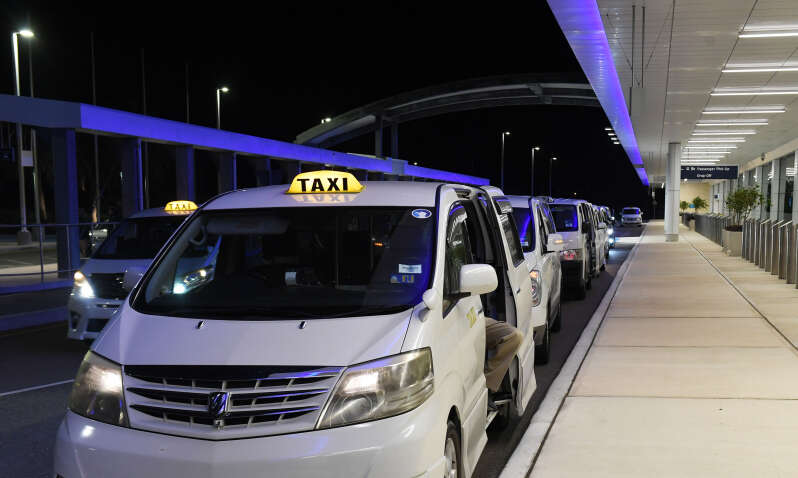Bermuda, a jewel of the Atlantic, is not only renowned for its breathtaking beaches and vibrant culture but also for its dependency on tourism as the backbone of its economy. As global travel patterns evolve, it becomes increasingly important for Bermuda to monitor and adapt its economic framework, particularly in the realms of transport and human management. To foster sustainable growth, the island must embrace innovative strategies to improve its workforce and traffic regulations, ensuring a harmonious balance between visitor expectations and local well-being.Tourism accounts for a significant portion of Bermuda’s GDP, directly impacting various sectors, from hospitality to retail. As the island attracts visitors year-round, monitoring tourism trends is crucial for predicting demand and aligning resources effectively. Understanding patterns not only brings economic stability but also necessitates an evaluation of the associated human and infrastructural needs.
The Importance of Transport Management
Traffic Flow Optimization: With an annual influx of tourists, effective transport management is essential. Implementing smart traffic systems can help regulate the flow of vehicles, minimizing congestion and enhancing the overall visitor experience. Real-time data collection and analysis can guide infrastructure improvements, ensuring that both locals and tourists navigate the island seamlessly.
Sustainable Transport Solutions: Adopting eco-friendly transport options, such as electric buses or bike-sharing programs, can decrease Bermuda’s carbon footprint while providing visitors with unique travel experiences. Monitoring the uptake of these alternatives helps gauge their effectiveness and can guide future initiatives.
Public Transport Accessibility: Proactively improving public transport options ensures that tourists have access to key attractions while alleviating pressure on the roads. By analyzing usage patterns and feedback, Bermuda can develop an efficient and user-friendly public transport system that caters to both residents and visitors.
Workforce Development: A Pillar of Sustainable Tourism
A well-trained workforce is indispensable in delivering exceptional experiences to visitors. Monitoring the labor market and investing in workforce development can yield significant benefits:
Training and Skill Enhancement: As the tourism sector changes, so do the skills required by staff. Offering ongoing training opportunities keeps the workforce updated on best practices in customer service, cultural sensitivity, and sustainable practices. This investment not only boosts employee morale but also enhances the visitor experience—essential for repeat business.
Diversity and Inclusion: Bermuda’s unique culture is one of its selling points. Fostering a diverse workforce that reflects the island’s heritage can enrich the tourism experience. By tracking employment trends, Bermuda can ensure equitable job opportunities for all locals while appealing to a broader international audience.
Seasonal Employment Strategies: Fluctuating tourist seasons necessitate adaptable workforce strategies. Monitoring seasonal trends enables local businesses to adjust staffing levels and training programs, ensuring that they are prepared for peak times without the burden of overspending during quieter periods.
Traffic Regulations A Balancing Act
Effective traffic regulations are key to managing the intersection of tourism and community life. Implementing measures that prioritize pedestrian safety, cycling, and public transport can strike a balance between accommodating tourists and preserving the quality of life for residents. Continuous evaluation of traffic patterns and regulations allows local authorities to:
Prioritize Safety: Ensuring the safety of both locals and tourists is paramount. Regularly monitoring traffic incidents can inform necessary changes to regulations, road signage, and enforcement measures.
Limit Overcrowding: By tracking foot traffic in popular areas, Bermuda can establish limits and promote lesser-known attractions, encouraging a more even distribution of visitors across the island.
Improve Community Engagement: By involving the community in discussions about traffic regulations, local authorities can gain valuable insights and foster a sense of ownership among residents. Encouraging feedback creates a collaborative environment where economic growth and community welfare go hand-in-hand.
In navigating the complexities of a tourist-based economy, Bermuda stands at a crossroads ripe with potential. By prioritizing the monitoring of transport systems, workforce development, and traffic regulations, the island can cultivate a thriving ecosystem that benefits both visitors and residents. As we look forward, it is essential that we embrace the synergy between economic growth and sustainable practices, ensuring that Bermuda remains a beloved destination for generations to come.
Ultimately, the key to success lies not just in celebrating the beauty of Bermuda but in continuously striving for a balanced approach to its vibrant tourism industry, making informed decisions that pave the way for a sustainable and prosperous future.


More Stories
Elevating Hamilton With QOE Construction’s Stunning New Apartment Haven on the Horizon
Exciting Renovations Underway at Esso Port Royal Gas Station in Bermuda
Unleashing Bermudian Talent A Call for More Local Events